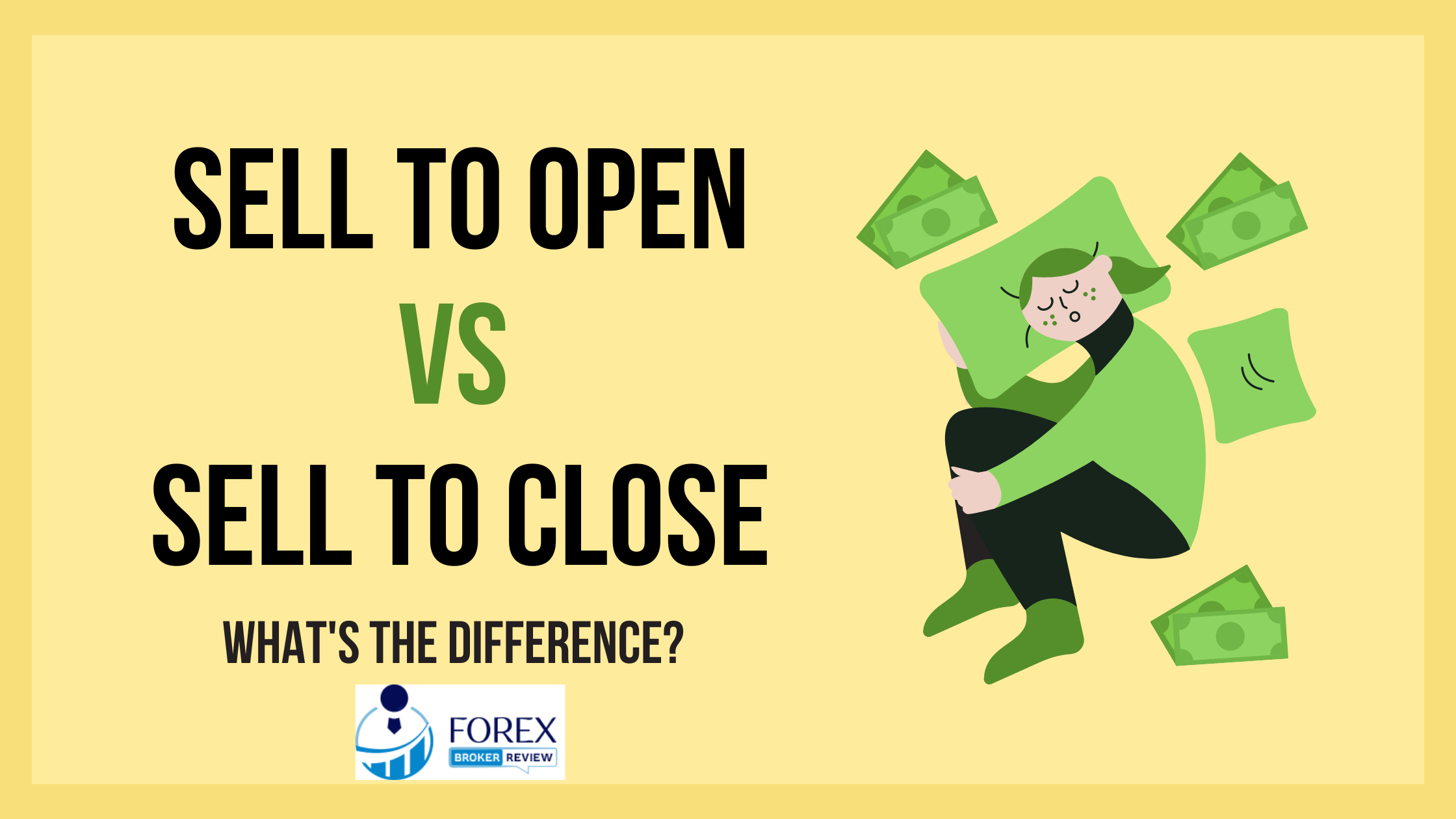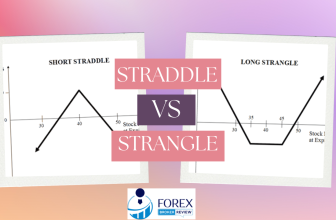
In the world of options trading, there are two important concepts that traders need to understand – “sell to open” and “sell to close.” These terms may sound confusing at first, but they play a crucial role in determining the success of an options trade. When you sell to open, you are essentially initiating a trade by selling an options contract. This allows you to collect a premium upfront and potentially generate additional income.
On the other hand, selling to close involves closing a trade by selling an options contract. This allows you to limit losses and take profits early. Understanding the difference between these two concepts is essential for making informed trading decisions. In this article, we will explore the key concepts, advantages and disadvantages, and the impact of these strategies on options value. We will also discuss important considerations that traders should keep in mind when using these strategies. So, let’s dive in and uncover the difference between sell to open and sell to close.
Key Takeaways
- Sell to Open involves selling an options contract to open a trade, while Sell to Close involves selling an options contract to close a trade.
- Selling to Open allows you to collect a premium upfront and create additional income, while Selling to Close limits losses and allows you to take profits early.
- Selling to Open can be used to hedge against downside risk, but may be difficult to exit when the underlying asset price is moving against you.
- Understanding probability of success, time decay, and implied volatility is important in options trading.
Key Concepts of Sell To Open Vs Sell To Close
Understanding key concepts such as probability of success, time decay, implied volatility, intrinsic value, and extrinsic value is crucial in options trading and can help traders make informed decisions when choosing between sell to open and sell to close strategies. The probability of success is a measure that can be calculated by brokers, and it affects the potential profits of a trade. Time decay refers to the decline in option value as it gets closer to expiration. Option sellers benefit from time decay as the premium erodes over time, while option buyers face the challenge of the premium also eroding.
| Concept | Sell to Open | Sell to Close |
|---|---|---|
| Definition | Initiating a new short position | Exiting an existing short position |
| by selling options contracts | by buying back previously sold | |
| options contracts | ||
| Objective | Generate premium income | Lock in profits or limit losses |
| Market Outlook | Neutral to bearish on the stock | Neutral to bullish on the stock |
| Risk Profile | Unlimited risk potential | Limited risk to premium paid |
| Time Frame | Can be held until expiration | Can be closed at any time |
| Breakeven Point | Strike price + premium received | Strike price +/- premium paid |
| Margin Requirements | Requires margin or cash cover | Margin not typically required |
| Strategy Examples | Writing covered calls | Buying back a short put option |
| Writing naked calls | Selling a long call option | |
| Writing cash-secured puts | Buying back a short call option |
Implied volatility plays a significant role in options pricing, with higher volatility resulting in higher prices. It is a measure of the expected future volatility of a security. Intrinsic value represents the amount by which an option is in-the-money, while extrinsic value is the portion of the option’s price that is not intrinsic value, which declines as expiration approaches. Understanding these concepts is essential for options traders to effectively analyze and navigate the sell to open and sell to close strategies.
Advantages and Disadvantages
One must consider the benefits and drawbacks associated with each approach in options trading. When it comes to Sell to Open and Sell to Close, there are advantages and disadvantages to both.
Selling to Open allows traders to collect a premium upfront and create additional income. It can also be used as a hedging strategy against downside risk. However, it may be difficult to exit a Sell to Open trade when the underlying asset price is moving against you.
On the other hand, Selling to Close limits losses and allows traders to take profits early. It also avoids extra trading commissions. However, it does not provide the opportunity to collect a premium upfront.
To better understand the advantages and disadvantages, consider the following table:
| Approach | Pros | Cons |
|---|---|---|
| Sell to Open | – Collect premium upfront – Hedge against downside risk | – Difficult to exit trade when asset price moves against you |
| Sell to Close | – Limit losses – Take profits early – Avoid extra commissions | – No upfront premium collection |
When considering which approach to take, it is important to assess the potential risks and rewards and incorporate effective risk management strategies.
Sell To Open Vs Sell To Close: Impact on Options Value
Contrary to popular belief, the impact on options value goes far beyond the simple dichotomy of selling and closing trades. Two important factors that significantly affect options value are implied volatility and time decay. Implied volatility refers to the market’s expectation of a security’s future volatility and has a direct impact on the price of options contracts.
Higher implied volatility leads to higher option prices. On the other hand, time decay refers to the decline in option value as expiration approaches. Option sellers benefit from time decay, as the premium erodes over time. Option buyers, however, experience a decrease in the premium value. As expiration gets closer, time decay accelerates, which can significantly affect the profitability of options contracts. Therefore, understanding and analyzing both implied volatility and time decay are crucial in options trading.
Considerations
When considering options trading, it is important to take into account various factors such as implied volatility, time decay, and market opinion in order to make informed decisions. Managing risk is a crucial aspect of options trading, and understanding the impact of these factors can help traders mitigate potential losses. Implied volatility plays a significant role in options pricing, as higher volatility leads to higher option prices.
Time decay, on the other hand, erodes the value of options as expiration approaches, benefiting option sellers. Additionally, market opinion is a key consideration when deciding whether to sell to open or sell to close. Traders must assess their outlook on the underlying asset and determine the best strategy to employ based on their expectations for price movements. By carefully considering these factors, traders can make more informed decisions and manage their risk effectively.
| Factors to Consider | Description | Impact on Options Trading |
|---|---|---|
| Implied Volatility | Predicts future volatility of a security | Higher volatility leads to higher option prices |
| Time Decay | Decline in option value over time, closer to expiration | Benefits option sellers, erodes option value |
| Market Opinion | Outlook on the underlying asset and price movements | Determines whether to sell to open or sell to close |
Frequently Asked Questions
What is the process for executing a Sell to Open trade?
Executing a sell to open trade involves several steps. Firstly, the trader must select the options contract they wish to sell. Then, they need to determine the quantity of contracts they want to sell. After that, the trader must set the price at which they are willing to sell the options.
Once these parameters are established, the trader can place the sell to open order with their broker. The broker will then execute the trade on the trader’s behalf, opening the position and collecting the premium upfront.
Can a Sell to Close trade be used to hedge against upside risk?
A sell to close trade involves selling an options contract to close a trade and take profits. While sell to close trades are typically used to lock in gains, they can also be used to hedge against upside risk. By selling an options contract, an investor can protect themselves from potential losses if the underlying asset price increases. This strategy allows them to limit their downside while still benefiting from any potential upside movement in the market.
How does time decay affect the value of options?
Time decay, also known as theta, is a crucial concept in options trading that affects the value of options. It refers to the decline in an option’s value over time, closer to its expiration date. Time decay impacts the extrinsic value of an option, which is the portion of its price that is not intrinsic value.
As expiration approaches, the rate of time decay accelerates, causing the option’s value to decrease. This is particularly advantageous for option sellers, as they can profit from the erosion of the premium over time.
What factors can impact implied volatility?
The factors that can impact implied volatility include news events and market conditions. News events such as earnings announcements, economic data releases, and geopolitical events can have a significant effect on implied volatility. These events can create uncertainty and volatility in the market, leading to higher implied volatility.
Additionally, market conditions, such as supply and demand dynamics and investor sentiment, can also influence implied volatility. Traders and investors need to closely monitor these factors as they can greatly impact options pricing and trading strategies.
Are there any specific strategies that can be used with Sell to Open or Sell to Close trades?
Strategies for sell to open and sell to close trades can vary depending on the market conditions and individual trading goals. When using the sell to open strategy, some common approaches include collecting premiums upfront to generate additional income and hedging against downside risk.
On the other hand, sell to close trades can be used to limit losses and take profits early. Both strategies have their benefits, and the choice between them should be based on market opinion and risk management considerations.






